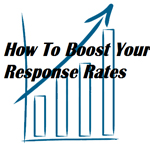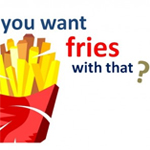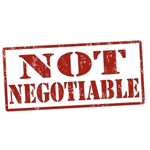 One of the sad things about marketing is that not everybody who should respond to an offer does respond. You also get people who do respond, who perhaps shouldn’t but that’s another kettle of fish.
One of the sad things about marketing is that not everybody who should respond to an offer does respond. You also get people who do respond, who perhaps shouldn’t but that’s another kettle of fish.
The most successful industry at getting people to pay is the collections industry. Think about it… Collections agencies are have to get money out of people who in all likelihood have no money to begin with.
Marketing at it’s best is about selecting people who can pay for your services and also want your services. Collections agencies have neither of these advantages, yet they still are profitable.
What’s Their Big Secret?
They send a SEQUENCE of letters to people asking to pay what they owe.
This is the general gist of how the sequence goes.
Letter 1: First notice – you owe money, pay up by the date below or suffer the consequences (which includes phone calls and unwelcome visitors).
Letter 2: Second notice – usually this is sent a 2-3 weeks after the first letter and it is a little more terse. And reminds them that we are closer to the deadline than we were when letter 1 went out.
Letter 3: Final notice – this is sent just before the deadline and basically says pay up in the next couple of days ‘or else.’
This is more effective than a single letter for the simple reason that repetition has an effect on people. It reminds them to do what they should have done the first time they received the letter and then promptly forgot.
3 letters has a higher response rate than 3 single shots. So if letter 1 had a respond rate of .5% you’d expect a response rate of 1.5% for three single shots. I’ve done a lot of these sequences and every time I see compound growth. I’ve had a .75% response to letter 1 (you’d expect 2.25% response to three letters) and the campaign pulled 7%.
So when you are marketing to your own customers the same rule applies. You should naturally get a higher response rate compared to marketing to new clients but the repetition of multiple steps in the sequence means that it works on your existing customers too.
So if you have a featured product in your newsletter then you should also be following up with additional email and mail and anything else you can think of.
 There is one task that will determine if a business goes from idea on paper to profitable enterprise. Without it you’ll scrap and fight for existence, struggle one month to the next in order to pay all the bills and meet pay roll.
There is one task that will determine if a business goes from idea on paper to profitable enterprise. Without it you’ll scrap and fight for existence, struggle one month to the next in order to pay all the bills and meet pay roll.
 I mean the Large Hadron Collider will either create a massive black hole to destroy the earth or it won’t.
I mean the Large Hadron Collider will either create a massive black hole to destroy the earth or it won’t. Very early in my marketing days, I was reading the Gary Halbert letter. It is a brilliant crash course in marketing and copywriting. Go though the entire archives written by Gary at
Very early in my marketing days, I was reading the Gary Halbert letter. It is a brilliant crash course in marketing and copywriting. Go though the entire archives written by Gary at  There are certain things that have to be done. Every month, every week and every day. Interestingly, they do vary for each business.
There are certain things that have to be done. Every month, every week and every day. Interestingly, they do vary for each business. This is an excerpt about features and benefits discussion I had with a client she wanted to know how she could make more money from each issue. I’ve cobbled together the relevant parts and removed names to protect the innocent. It is a very important content writing and copywriting lesson. Don’t get fooled by the funny.
This is an excerpt about features and benefits discussion I had with a client she wanted to know how she could make more money from each issue. I’ve cobbled together the relevant parts and removed names to protect the innocent. It is a very important content writing and copywriting lesson. Don’t get fooled by the funny. Those three little words can be the source of every breakthrough and they can also be the source of damnation. Knowing whether or not a certain tactic works is the first step towards evaluating anything in general, but also in business.
Those three little words can be the source of every breakthrough and they can also be the source of damnation. Knowing whether or not a certain tactic works is the first step towards evaluating anything in general, but also in business. I think the reason business owners emotionally covet referrals is because they feel like they are free. We all like to get something for free – and perhaps a free customer is the best thing we could get for free.
I think the reason business owners emotionally covet referrals is because they feel like they are free. We all like to get something for free – and perhaps a free customer is the best thing we could get for free. In some ways it’s amazing that marketing is such a little understood skill. I for one am grateful that it is, but there are drawbacks to it.
In some ways it’s amazing that marketing is such a little understood skill. I for one am grateful that it is, but there are drawbacks to it.